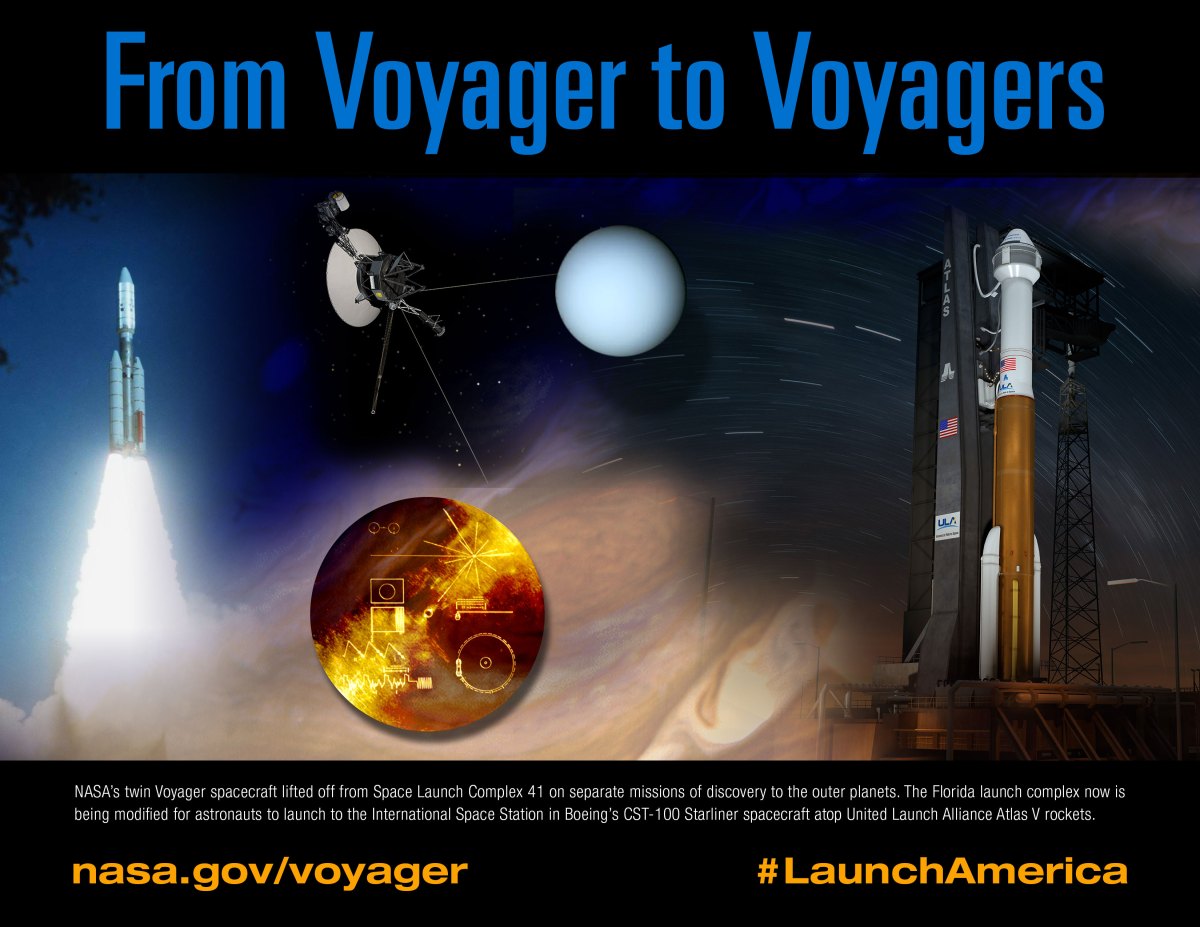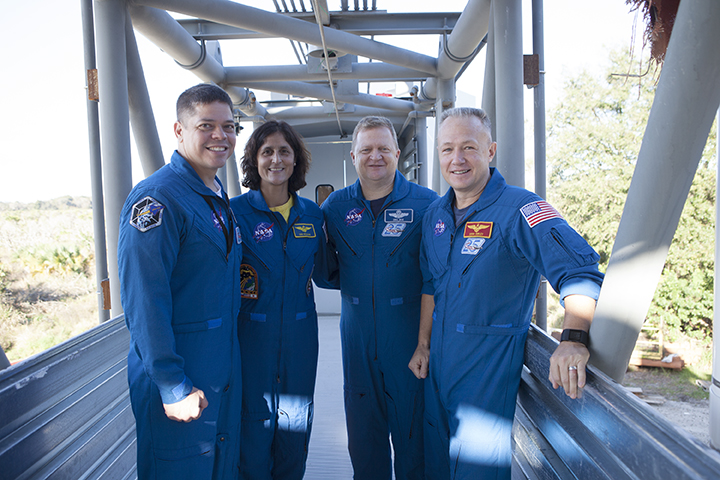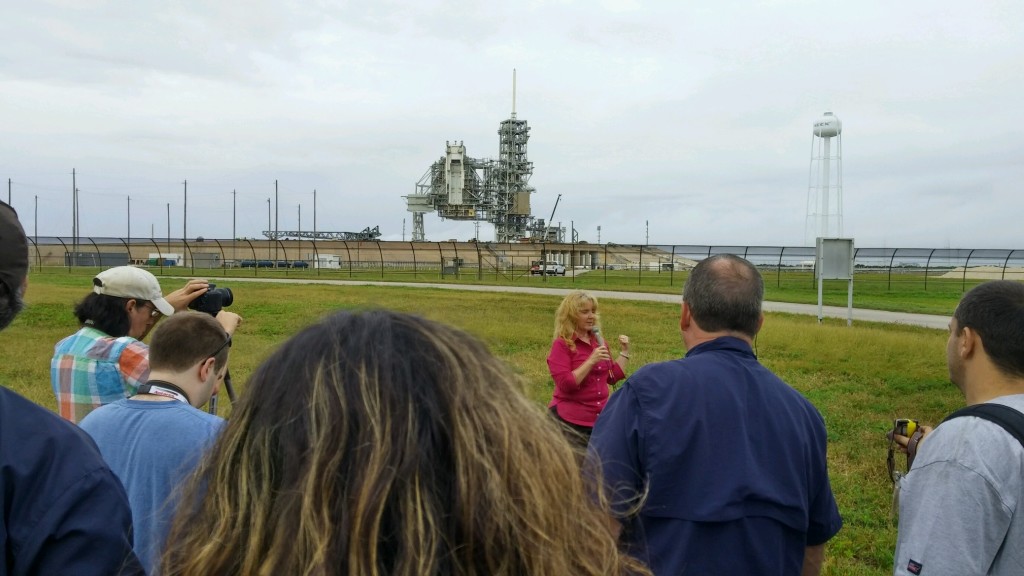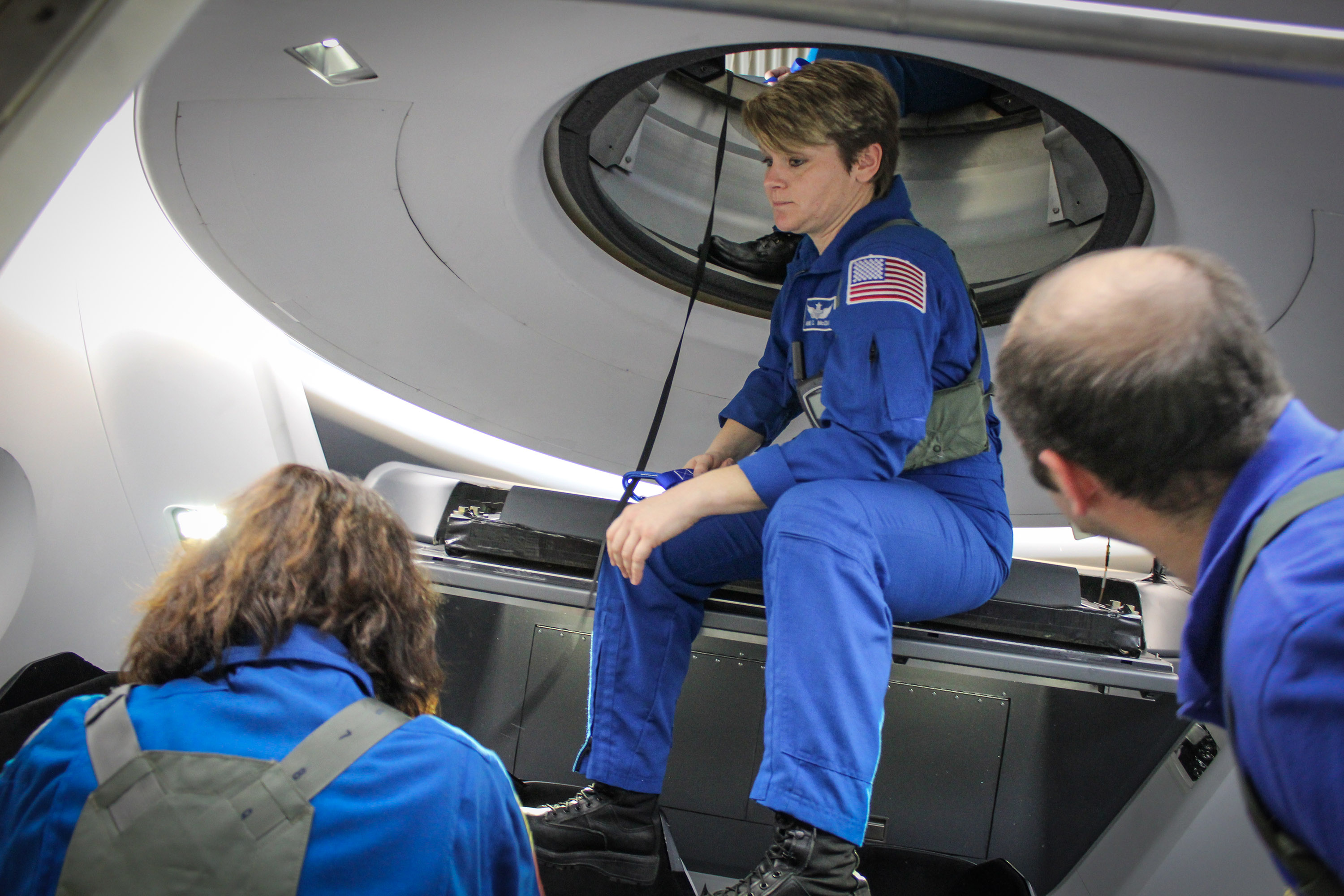 Astronaut Anne McClain takes part in egress training for the Crew Dragon at SpaceX’s Hawthorne, California, headquarters recently as part of a larger team of astronauts and engineers evaluating processes for the new generation of American spacecraft in development to carry astronauts to the International Space Station. Working inside a mock-up built by SpaceX to simulate the actual spacecraft, the team practices leaving the spacecraft through the top hatch of the Crew Dragon as well as using the side hatch. The work is common in assessing spacecraft design. For astronauts, such rehearsals are regular exercise in mission preparations even in spacecraft that have been flying regularly.
Astronaut Anne McClain takes part in egress training for the Crew Dragon at SpaceX’s Hawthorne, California, headquarters recently as part of a larger team of astronauts and engineers evaluating processes for the new generation of American spacecraft in development to carry astronauts to the International Space Station. Working inside a mock-up built by SpaceX to simulate the actual spacecraft, the team practices leaving the spacecraft through the top hatch of the Crew Dragon as well as using the side hatch. The work is common in assessing spacecraft design. For astronauts, such rehearsals are regular exercise in mission preparations even in spacecraft that have been flying regularly.
Category: Kennedy Space Center
SpaceX Tests SuperDraco Descent Landing Capability
 SpaceX recently tested its ability to fire engines that will be used to land a human-rated spacecraft safely on the ground with the accuracy of a helicopter at the company’s test facility in McGregor, Texas. SpaceX envisions returning people to Earth from space on the power of thrust instead of beneath parachutes. Working with NASA’s Commercial Crew Program, SpaceX is in the early phases of analysis. In November, the company conducted two tethered tests of a full-size Crew Dragon mock-up attached to a crane so engineers could refine the landing software and systems on the spacecraft. The Crew Dragon spacecraft will be equipped with eight SuperDraco thrusters that would be used to slow the vehicle’s return to Earth through the atmosphere and ultimately set the spacecraft and its crew down gently.
SpaceX recently tested its ability to fire engines that will be used to land a human-rated spacecraft safely on the ground with the accuracy of a helicopter at the company’s test facility in McGregor, Texas. SpaceX envisions returning people to Earth from space on the power of thrust instead of beneath parachutes. Working with NASA’s Commercial Crew Program, SpaceX is in the early phases of analysis. In November, the company conducted two tethered tests of a full-size Crew Dragon mock-up attached to a crane so engineers could refine the landing software and systems on the spacecraft. The Crew Dragon spacecraft will be equipped with eight SuperDraco thrusters that would be used to slow the vehicle’s return to Earth through the atmosphere and ultimately set the spacecraft and its crew down gently.
Propulsive landing will not be used initially for missions with NASA astronauts to the International Space Station.The Crew Dragon will splash down safely in the ocean under parachutes as its passengers return from the space station.
Eve of Launch: 2016 Goals Vital to Commercial Crew Success
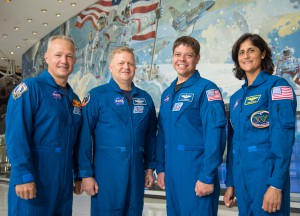 NASA’s Commercial Crew Program and its aerospace industry partners Boeing and SpaceX are on the eve of America’s return to human spaceflight launches. By the time the year closes, Boeing’s CST-100 Starliner and SpaceX’s Crew Dragon will be poised for the flight tests that allow our astronauts to travel to the International Space Station lifting off from Florida’s Space Coast.
NASA’s Commercial Crew Program and its aerospace industry partners Boeing and SpaceX are on the eve of America’s return to human spaceflight launches. By the time the year closes, Boeing’s CST-100 Starliner and SpaceX’s Crew Dragon will be poised for the flight tests that allow our astronauts to travel to the International Space Station lifting off from Florida’s Space Coast.
It won’t be easy. Successful missions will require a comprehensive testing regimen of numerous systems on the ground and in space. That is why the outline of tasks for 2016 is so important. The result of each evaluation will be vital in the design of the systems. From parachute tests, to launch pad certifications, to the completion of spacecraft that will fly into orbit, this year offers both companies opportunities to build on the momentum of 2015 and carry it through to landmark space achievements in 2017. Read the details of what NASA’s Commercial Crew Program and its partners will be working on in 2016 to set us up for 2017 at http://go.nasa.gov/1UbVMjk
From Voyager to Voyagers
15 in ’15: How Commercial Crew Advanced Toward Flight

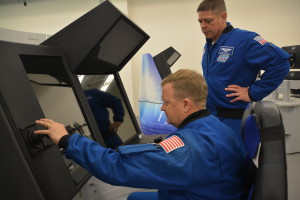 NASA’s Commercial Crew Program took vital steps in 2015 to move America closer to flying astronauts from its own soil aboard American spacecraft in 2017. Boeing and SpaceX, each a partner with NASA on separate crew transportation systems, performed systems tests, built up assembly areas and modified the launch pads at Kennedy Space Center and Cape Canaveral Air Force Station to safely launch crew members from the storied shores of Florida’s Space Coast.
NASA’s Commercial Crew Program took vital steps in 2015 to move America closer to flying astronauts from its own soil aboard American spacecraft in 2017. Boeing and SpaceX, each a partner with NASA on separate crew transportation systems, performed systems tests, built up assembly areas and modified the launch pads at Kennedy Space Center and Cape Canaveral Air Force Station to safely launch crew members from the storied shores of Florida’s Space Coast.
We chose the top 15 accomplishments, including:
– NASA Named First Four Astronauts to Train with Boeing and SpaceX
– United Launch Alliance Completed Crew Access Tower Column at SLC-41
– Crew Dragon Completed Pad Abort Test
Take a look at the full list at http://go.nasa.gov/1InI6kr
Young Explorers’ Artwork Featured in 2016 Calendar
 Some of the best works of art come from children who are only limited by their imaginations, like the more than 150 young explorers from across the country who submitted artwork depicting human spaceflight as they see it. Sixteen masterpieces were chosen to be included in the Commercial Crew Program’s 2016 Children’s Artwork Calendar, which is now available for download here. We offer a huge “thank you!” to all the explorers, ranging in age from four to 12, who submitted their work and hope that everyone will enjoy and use this calendar next year.
Some of the best works of art come from children who are only limited by their imaginations, like the more than 150 young explorers from across the country who submitted artwork depicting human spaceflight as they see it. Sixteen masterpieces were chosen to be included in the Commercial Crew Program’s 2016 Children’s Artwork Calendar, which is now available for download here. We offer a huge “thank you!” to all the explorers, ranging in age from four to 12, who submitted their work and hope that everyone will enjoy and use this calendar next year.
Seeking Sky Walkers
Have you ever wanted to explore to a galaxy far, far away? Is the Force strong in you? NASA seeks sky walkers to join the astronaut alliance. Learn more, at www.nasa.gov/astronauts.
Astronauts Celebrate With Builders Topping of Crew Access Tower
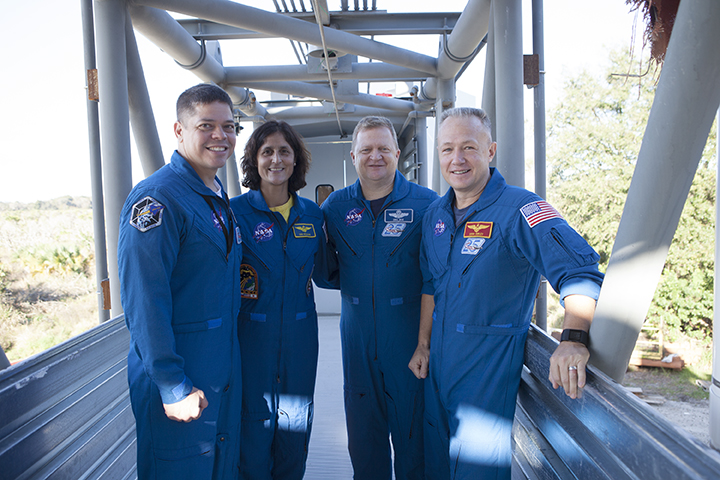
 Four astronauts training for test flights with NASA’s Commercial Crew program joined the festivities at Space Launch Complex 41 Thursday morning as one of the highest steel beams was placed on the Crew Access Tower during a “topping off” ceremony with United Launch Alliance, Boeing and Hensel Phelps at the Cape Canaveral Air Force Station launch site in Florida.
Four astronauts training for test flights with NASA’s Commercial Crew program joined the festivities at Space Launch Complex 41 Thursday morning as one of the highest steel beams was placed on the Crew Access Tower during a “topping off” ceremony with United Launch Alliance, Boeing and Hensel Phelps at the Cape Canaveral Air Force Station launch site in Florida.
“It’s really an honor to get down here. We’re humbled to be a part of launching rockets for the United States again,” said Doug Hurley, a veteran of space shuttle missions and one of the four chosen to work closely with partners of NASA’s Commercial Crew Program during development, testing and training. Bob Behnken, Eric Boe and Suni Williams were also selected and took part in the employee-focused event.
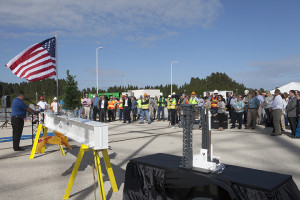 “It’s amazing how many people it takes to get us into space,” Boe said.
“It’s amazing how many people it takes to get us into space,” Boe said.
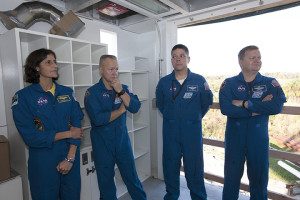 A large crowd of employees from numerous companies gathered mid-morning to sign the 650-pound beam and watch a crane lift it into place atop the 200-foot-tall Crew Access Tower constructed over the past year. It was built in segments complete with stairs, cable trays and other fittings a few miles from the launch pad, then those segments were stacked on top of each other to form the tower. The Crew Access Arm and White Room the astronauts looked over today will be attached to the tower after several months’ of testing and fit checks.
A large crowd of employees from numerous companies gathered mid-morning to sign the 650-pound beam and watch a crane lift it into place atop the 200-foot-tall Crew Access Tower constructed over the past year. It was built in segments complete with stairs, cable trays and other fittings a few miles from the launch pad, then those segments were stacked on top of each other to form the tower. The Crew Access Arm and White Room the astronauts looked over today will be attached to the tower after several months’ of testing and fit checks.
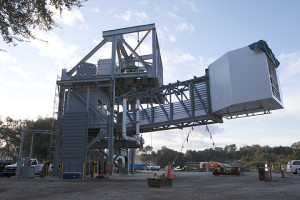 “We’ve poured 1,000 cubic yards of concrete and mounted nearly 1 million pounds of steel, and we’ve done it in spectacular fashion,” said Howard Biegler, launch operations lead for ULA’s Human Launch Services.
“We’ve poured 1,000 cubic yards of concrete and mounted nearly 1 million pounds of steel, and we’ve done it in spectacular fashion,” said Howard Biegler, launch operations lead for ULA’s Human Launch Services.
Employees were asked to sign the beam before it was lifted into place and welded to the top of the tower.
“Today you are part of history,” said Kathy Lueders, program manager of NASA’s Commercial Crew Program. “Stop and enjoy this moment. I hope everyone has been able to write their name on the beam because you are part of the critical safety network that is making this all possible.”
Prior to the ceremony at SLC-41, the astronauts toured the White Room and Crew Access Arm undergoing testing at a construction yard near Kennedy Space Center. The White Room will be the stepping off point to space for astronauts as they board a Boeing CST-100 Starliner for liftoff on a ULA Atlas V rocket. Designed as a clean area to keep contaminants out of the spacecraft and off the astronauts’ suits, white rooms are the place where technicians make last-minute additions to the spacesuit and make sure everything is ready to flight as the flight crew climbs inside for launch. White rooms have always been a part of NASA’s human spaceflight efforts, from Mercury to Gemini and Apollo to the space shuttle.
“This is the last thing that whoever flies the Starliner is going to see before they go into space,” Hurley told the workers who built the structures.
Boeing and SpaceX are developing a new generation of spacecraft to carry astronauts to the International Space Station beginning in 2017. Both companies are also deep into construction and modification of launch facilities at NASA’s Kennedy Space Center in Florida to safely host astronaut crews as they launch from American soil for the first time since 2011. Designs for launch facilities have been confirmed through NASA panels and in-depth examinations.
For Boeing, launching from SLC-41 meant building the Crew Access Tower, the first crew-focused structure at Cape Canaveral since Apollo 7. SpaceX is modifying historic Launch Pad 39A for its commercial crew missions on the Crew Dragon spacecraft launching on its Falcon 9 rockets. It also will have a White Room tailored to its designs that will offer astronauts and ground crew safety as they board and a way to leave the spacecraft in a hurry before launch in the unlikely event of an emergency. Photo credits: NASA/Kim Shiflett
Starliner Structural Test Article Assembly Features in Tour
News media and NASA Social participants were treated to a close-up look at the structural test article for Boeing’s CST-100 Starliner spacecraft as they toured the company’s Commercial Crew and Cargo Processing Facility at NASA’s Kennedy Space Center Tuesday afternoon.
Danom Buck, manager of the Manufacturing and Engineering team, said the test version will be built using the same techniques and processes planned for the operational spacecraft that will carry astronauts to the International Space Station for NASA’s Commercial Crew Program. Two flight tests, one without a crew and the second with a crew aboard, will be performed before the company begins operational flights to the station that will allow for an extra resident there and double the amount of astronaut time devoted to science.
Commercial Crew Showcased on Tour
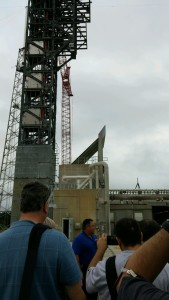 Commercial Crew team members with NASA and our aerospace industry partners showed what a season of advances has meant for the launch sites where NASA astronauts will lift off on missions to the International Space Station in the near future.
Commercial Crew team members with NASA and our aerospace industry partners showed what a season of advances has meant for the launch sites where NASA astronauts will lift off on missions to the International Space Station in the near future.
At Launch Pad 39A, Carol Scott, who works technical integration for NASA’s Commercial Crew Program, showed news media and NASA Social participants the new look SpaceX is applying to the launch complex to make it suit the company’s needs for Crew Dragon missions.
Boeing and United Launch Alliance spent the last couple months building a new Crew Access Tower at Space Launch Complex 41, the place where Boeing’s CST-100 Starliner will fly from on missions with astronauts. NASA’s Steve Payne, who works in Launch Integration, and ULA’s Howard Biegler, Launch Operations lead of Human Launch Service, detailed the work that went into constructing the tower that will contain all the systems needed to safely support human crews and ground support staff for a Starliner launch.
The progress is important for NASA because it will restore American capabilities to launch astronauts to low-Earth orbit. For the orbiting laboratory of the space station, the flights will increase the crew by one and double the amount of time astronauts can devote to cutting-edge research to answer the vexing issues of a journey to Mars and to conduct science off the Earth for all those on the Earth.

